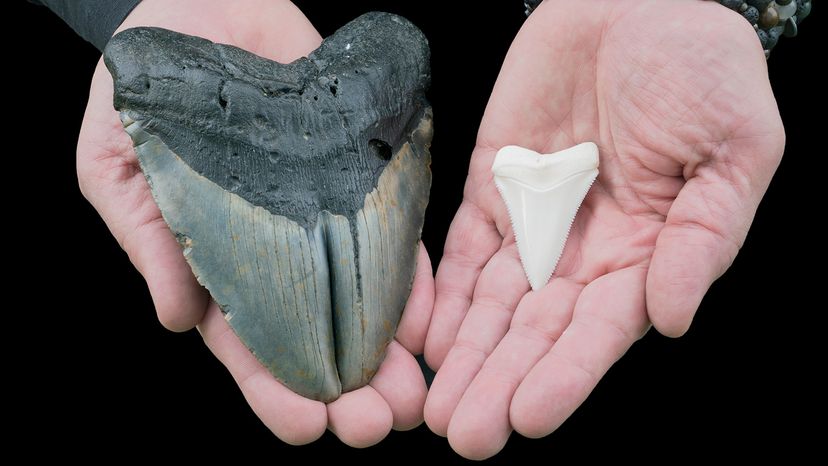The earliest megalodon fossils (Otodus megalodon, previously known as Carcharocles megalodon or Carcharodon megalodon) are 20 million years old. These fossils tell us a lot about what the megalodon might have looked like.
Understanding the megalodon's size and physical features is essential for appreciating the sheer magnitude of this ancient creature. From its gigantic jaws to its formidable teeth, each aspect of the megalodon's anatomy contributed to its reputation as a dominant force in prehistoric oceans.
How Big Was a Megalodon Shark?
The fossil record leads the scientific community to estimate that the largest megalodon was up to 65 feet long (nearly the length of two school buses!). But how, exactly, did they determine the size?
Fossilized shark skeletons are extremely rare, due to the cartilaginous nature of their bodies, which do not fossilize as well as bone. Consequently, paleontologists rely on fossilized teeth to determine the size of these ancient creatures. They use sophisticated methods to extrapolate the overall body size from the dimensions of these teeth.
Megalodon size estimates are then compared to the size of modern great white sharks, which pale in comparison both in terms of body size and body mass. Even when compared to a whale shark, the largest fish swimming in today's oceans, the megalodon's size is astonishing.
Megalodon Jaws
The megalodon's jaw was a marvel of prehistoric evolution, possessing powerful jaws that could open wide enough to engulf two adult people side-by-side. It's estimated that their jaw would span 8.8 to 11 feet (2.7 to 3.4 meters) wide.
What's more, the megalodon had an impressive bite force, roughly six to 10 times stronger than that of a great white shark and at least three times stronger than that of a Tyrannosaurus rex. This incredible bite force, combined with a massive jaw, allowed the megalodon to dominate the ancient seas.
Megalodon Teeth
Megalodon teeth are among the most iconic fossils, revealing much about the size and feeding habits of this ancient predator.
The largest megalodon tooth ever discovered measures an impressive 7.48 inches in length. It was found in the desert of Ocucaje, Peru. However, it's worth noting most adult megalodon teeth were typically 4 to 5 inches long. Teeth exceeding 6 inches are very rare.
These massive, fossilized teeth are characterized by their triangular shape and robust structure. The jaw was lined with rows of large, serrated teeth designed for slicing through the flesh and bone of its prey. In fact, adult sharks likely had about 276 teeth.
The study of megalodon teeth has been crucial for scientists to understand the feeding behavior, diet and ecological role of this extinct marine giant.
What Did the Megalodon Look Like?
For many years, reconstructions of the megalodon depicted it as a gargantuan version of modern great white sharks; however, this comparison is now considered inaccurate by the scientific community.
Instead of the elongated nose or rostrum characteristic of the great white, the megalodon likely had a shorter nose, paired with a much flatter, compact jaw and long pectoral fins, distinguishing it significantly in appearance from its modern-day relatives.
